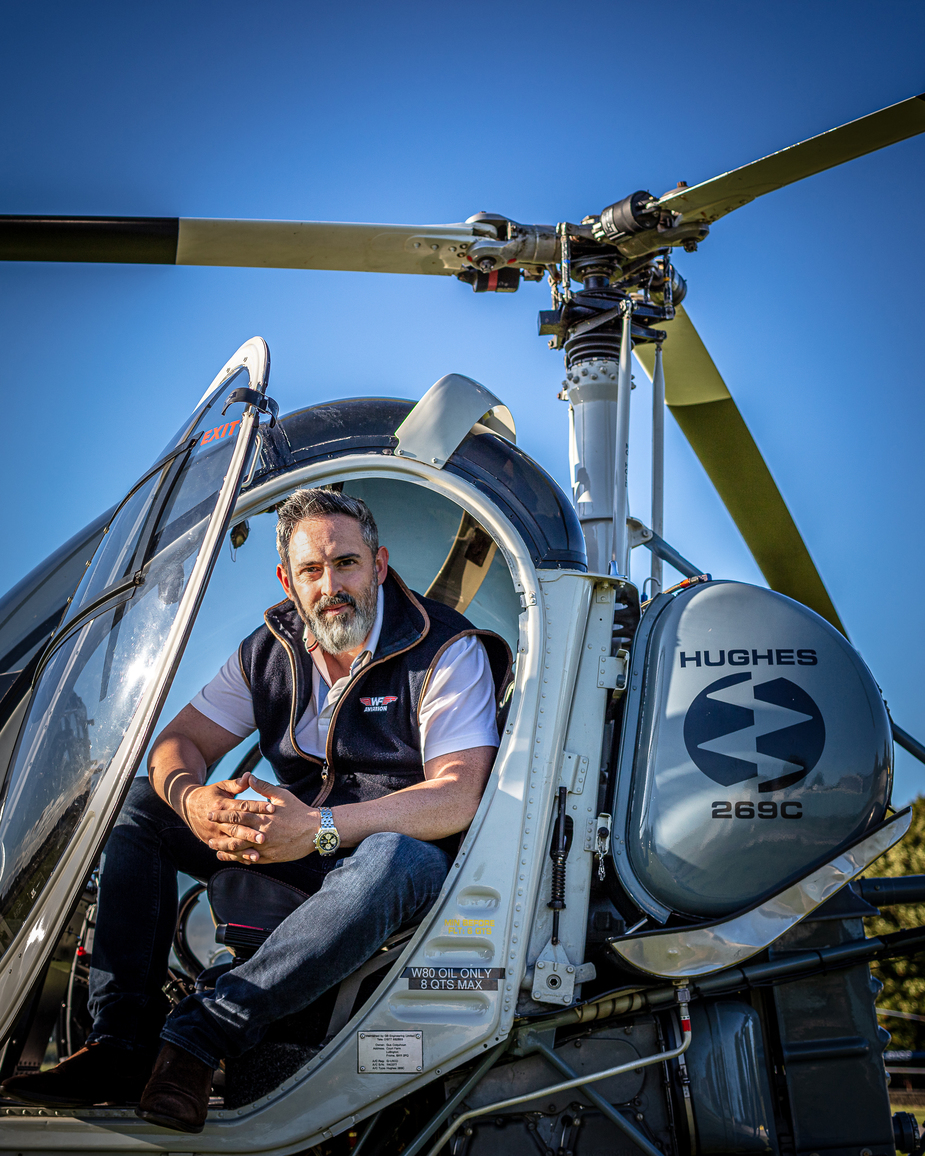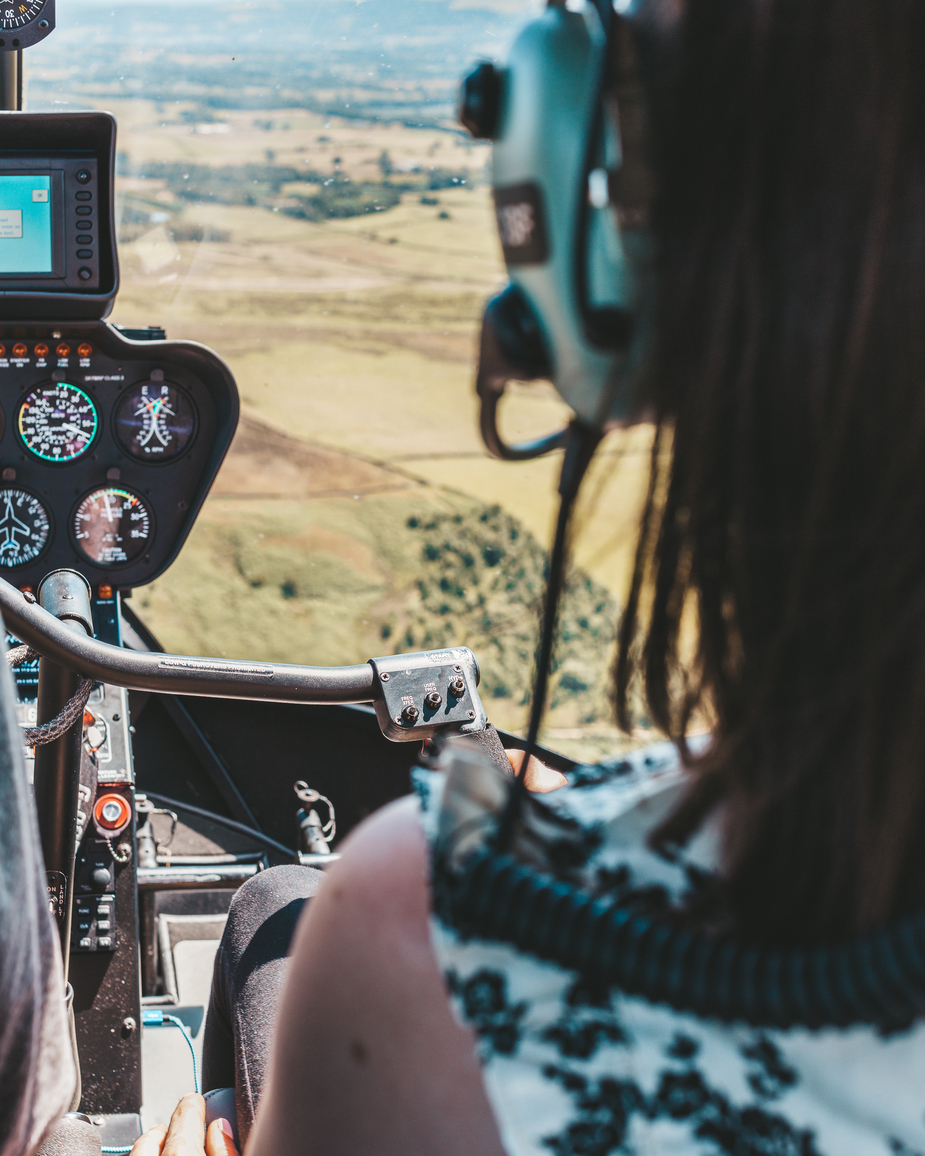Always one exception.
Quite. Eric “Winkle” Brown was tasked with collecting the first ever helicopter in the UK from where the US mechanics had assembled it. But the instructor didn’t show up. So he sat in it, futzed around for a while, then flew it home. There is a well-known video showing the more likely outcome of this for ordinary mortals.
Anyone here who has experience about ultralight helis? Would it be cheaper to practice with them first perhaps not even for a licence but just to get the conversion done cheaper. Actually those hours might even be counted towards the PPL(H) in the future – at least in Finland. What I imagine is that ultra is even harder to use as it jumps around too easily.
We have a guy here who has a ULM heli.
I asked him about it andbthe costs. Because the maintenance of a ULM helicopter it basically is like a certified one. It has to go back to the manufacturer or his agent. What it does amount to is that learning on a ULM heli is only between €30 to €50 cheaper than a more usual training heli, at about €300 per hour. I I couldn’t quite get from him whether this was an owner/pilot €300;p/h or whether that was the training cost ie with instructor. The main benefit as far as I could see is simply the self declared medical.
Something I would be curious about is how much transferable the skills are from learning to fly a remote controlled helicopter (proper, large ones) to flying full-size aircraft. There’s a lot that you clearly won’t learn, but equally I would be surprised if it didn’t confer some degree of advantage.
@kwlf My experience with RC helis hasn’t transferred to the time I’ve flown a real one, in fact I’d say it isn’t of any real use at all.
That’s what I found anyway. What did help is many hours flying the DCS Huey simulator with VR goggles, using the hand controllers for the cyclic and collective as opposed to a normal spring loaded joystick. If you can get good at that, the real thing is likely to come fairly naturally.
Anyone here who has experience about ultralight helis? Would it be cheaper to practice with them first perhaps not even for a licence but just to get the conversion done cheaper. Actually those hours might even be counted towards the PPL(H) in the future – at least in Finland. What I imagine is that ultra is even harder to use as it jumps around too easily.
I have a Class 6 ULM licence. I’ve flown CH7 (2-seat) and Mosquito (single seat) ultralights. Lively and responsive, not at all difficult to fly. They are not nearly as sluggish as R22, Enstrom 280, S300 etc. with far better power to weight ratio. Much more fun to fly, though just as impractical for travelling any distance. Like a sports motorcycle compared with a so-called “tourer”.
The only thing which could make the Mosquito a more superlative beach toy would be addition of an XM214 – though feeding it would increase the overall running cost by many orders of magnitude. 
I did my Master Thesis a 100 years ago at Eurocopter, they had a very educational book (that I never found to buy outside) about all the odd and counter-intuitive things that make a helicopter flyable and controllable.
Exhibit A – the main rotor:
carlmeek wrote:
I think the right seat is preferable. With your right hand on the stick, you can use your left hand to operate radio and other stuff that’s in the centre.
The first time I flew a plane I found it very strange to control the plane with my left hand, which is otherwise generally unprecise and fairly useless. But fine motor skills in my right hand were welcome to tune the radio and instruments.
Now when I fly right seat and need to take over for some minutes I find myself very clumsy trying to fly with my normally good hand and to tune things with my left hand.
I definitely like the left seat better, but I guess you get used to everything.
Day 8 & 9
Finally, solo in the helicopter at 19.4hrs. Matthew my business partner got it done in 13 odd hours which was a great achievement. Lots of consolidation of the exercises previously covered, so that the solo itself was no big deal other than 2" less MP and a few clicks of right cyclic trim. We had to cut it short to 20 mins as a rock band passing through needed the pad for a hot refuel.
We have decided to sell the Hughes 300C at the end of our training. Much discussion of the relative merits of the Bell 206, Enstrom 480 and Hughes 500. The main considerations are maintenance support, passenger comfort, availability of expert pilots and resale value. So it really doesn’t get much debate, the Bell Jet Ranger wins for us. I can ring at least 6 people I know who are experts in the B206 and have owned them for a long time. It can be maintained easily and surprises will be limited. I have friends who own/ed both the 480 and Hughes 500 and they loved them, but practicality will win out here rather than looks or pilot appeal. Into the B3 model over the B2 or the earlier models for its improved tail rotor authority and resale appeal. Have looked at one, and going to see one more we know about. Probably better suited than most people to take on something like this as we have hangarage, maintenance support, cost price fuel, an instructor experienced on the type and a bit of moral support from other owners.
When I see my old Cessna 180K on planecheck for the price of a good Jet Ranger, it makes me wonder where the value is.

Day 10 & 11
Taking a veer off the PPL(H) course in the 269C to experience the Robinson R44, as my family were over in Harrogate for a holiday. We decided it would be good to put 5hrs on the Robinson as it is a very likely item to have as stock in trade for us. I had high hopes for the R44 and expected to fall head over heels for its affordable four-seat capability. I got to fly the Raven II and the Raven I in its Clipper format. The big difference with the Raven 2 is the fuel injection and the wide chord blades. The Raven 1 has a heavy set of pop-out floats and carb heat to contend with, but the Raven 1 was much nicer to fly for reasons I cannot explain. In any given situation the fuel-injected Raven 2 was using less manifold pressure than the Raven 1. Both were a doddle to start unlike the 269C and it was clearly designed by Mr Robinson for the mass market. Tiny examples of his thinking are the electric fuel pump which comes on with the clutch switch, and the starter will not engage with the rotor brake on.
The R44 is easy to fly once underway, but I think the raw military nature of the 269C had me well prepared. I would love to see an R44 trained pilot try the 269C  … The R44 was not as easy to hover as the 269C and this I will solely attribute to the T-Bar cyclic which I did not like, at all. In mind, and based on all the hearsay I had heard, I thought the R44 would be 105kts in the cruise. I tried both variants and that is unrealistic. I would love to see a track log of a trip where someone is actually getting even near that. 90kts would be a realistic figure, but this unveils the flaw. The helicopter does not like rough air at high speeds. If you want to fly over hilly ground at 1000ft on a windy day, I think you would be juggling knives in the R44. The POH says 60-70kts is best for rough air, and if you start to think about where a helicopter operates this is quite significant. A great many experienced helicopter pilots have overcontrolled in rough air, and crashed. We were operating in perfect conditions, over some high ground and I could feel that shuffle as it bobbed about which is not helped by the T-Bar cyclic moving with you as it bobs around. The little 269C is like a tank by comparison, and I came away from the 5hrs thinking there is magic happening above my head with the fully articulated rotor system of the Hughes/Schweizer. Our B206 options have been reduced (one pre-purchase not so good/other one sold) so we will not let go of a known good thing until we have a solid path to progress on.
… The R44 was not as easy to hover as the 269C and this I will solely attribute to the T-Bar cyclic which I did not like, at all. In mind, and based on all the hearsay I had heard, I thought the R44 would be 105kts in the cruise. I tried both variants and that is unrealistic. I would love to see a track log of a trip where someone is actually getting even near that. 90kts would be a realistic figure, but this unveils the flaw. The helicopter does not like rough air at high speeds. If you want to fly over hilly ground at 1000ft on a windy day, I think you would be juggling knives in the R44. The POH says 60-70kts is best for rough air, and if you start to think about where a helicopter operates this is quite significant. A great many experienced helicopter pilots have overcontrolled in rough air, and crashed. We were operating in perfect conditions, over some high ground and I could feel that shuffle as it bobbed about which is not helped by the T-Bar cyclic moving with you as it bobs around. The little 269C is like a tank by comparison, and I came away from the 5hrs thinking there is magic happening above my head with the fully articulated rotor system of the Hughes/Schweizer. Our B206 options have been reduced (one pre-purchase not so good/other one sold) so we will not let go of a known good thing until we have a solid path to progress on.
To end on a positive note, my passengers were thrilled with the ride out in the back of the R44. To give an example of the people-pleasing nature of helicopters, we brought my wife 10nm to The Devonshire Arms located in the beautiful scenery in the Yorkshire Dales. She was thrilled with the view, the fabulous sense of arrival, the cream tea which was first class and getting to fly it with the instructor on the way home. To finish he did a textbook autorotation to the ground, and her fears of helicopters have been fully displaced.


WilliamF – before you commit to a B206, check on the TT straps cost. They’ll need 2 every 36 months and are not cheap.